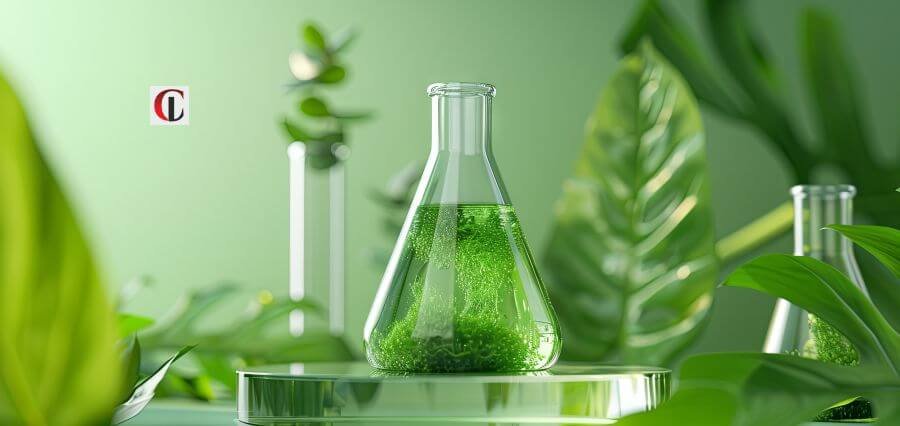Green chemistry is a science of designing chemical products and processes that minimize or eliminate the use and generation of hazardous substances. It is an approach applied through the entire life cycle of a chemical product from its creation to its manufacturing, application, and disposal. Chemicals and processes should aim to ensure that they become cheaper and safer, but performance will be at a similar level compared to their polluting counterparts; the pollution it minimizes would come from the source. Diminishing waste, maintaining raw materials, and minimizing all sorts of negative effects for human health and the environment have much to do with green chemistry.
Benefits of Green Chemistry
Green chemistry leads to cleaner air and water since it reduces the emission of hazardous chemicals. This means less damage to people’s lungs and clean water for drinking and recreation. It also makes workplaces in the chemical industry safer by reducing the use of toxic materials and the risk of accidents. The outcome of green chemistry is safer consumer products, including drugs, pesticides, and cleaning agents made in lesser concentrations of chemicals that can cause harm and with less waste. It also means safer food since it eliminates persistent toxic chemicals that can find their way into the food chain.
For the Environment Many chemicals are released through deliberate emissions, accidental release in the production site, or into the environment during disposal. Green chemicals decompose into harmless products or get recycled for further use and hence plants and animals are exposed to fewer toxic chemicals. Green chemistry also decreases the chances of global warming, depletion of the ozone layer, and formation of smog and chemical disruption of ecosystems. It also reduces the extent of landfills, particularly that of hazardous wastes.
In terms of green chemistry, it implies having higher yields of chemical reactions that mean lower input of raw materials to deliver a similar output of product. Usually, there would be less requirement for synthetic steps, accelerating manufacture, boosting plant capacity, and saving on energy and water resources.
With this waste reduction approach, expensive cleanup, toxic wastes disposal, and end-of-pipe treatment is eliminated. Green chemistry also allows companies to replace purchased raw materials with waste products and improve product performance so that less product is needed. It also reduces the use of petroleum products, which slows down their depletion and avoids price fluctuations. Green chemistry can even reduce the size of manufacturing plants because of increased production. Finally, it can increase sales by allowing companies to make use of safer-product labels.
Principles of Green Chemistry
Green chemistry bases its design of chemical products as well as how to implement it on a number of principles which guide the system. These include:
- Prevention: It is better to prevent waste than it is to try to clean up or treat it after it is formed.
- Atom Economy: Synthetic methods should be such that they avoid the use of all available materials in the process in the most buried form.
- Less Hazardous Chemical Syntheses: Wherever practicable, synthetic methods should be designed to work with materials that offer little or no toxicity to human health and the environment.
- Designing Safer Chemicals: Chemical products should be designed to support their intended function while reducing their toxicity.
- Safer Solvents and Auxiliaries: The use of auxiliary materials, such as solvents, separation agents, etc., should be avoided wherever practicable and harmless when used.
- Design for Energy Efficiency: All chemical processes must be assessed in terms of their energy demands so that both their ecological and their economic consequences could be assessed and minimized. Where feasible, synthetic routes should be performed at ambient temperature and pressure.
- Use of Renewable Feedstocks: A feedstock or starting material must be renewable rather than a depleter wherever technically and economically feasible.
- Derivatives: In principle, avoid all unnecessary derivatization steps: blocking groups, protection/ deprotection, temporary modification of physical/chemical processes; this means extra reagents are involved and wastes will be generated.
- Catalysis: Catalytic reagents – as selective as possible – are superior to stoichiometric reagents.
- Design for Degradation: Chemical products shall be designed such that, when they have completed their function, they degrade into harmless products and do not persist in the environment.
- Real-time analysis for Pollution Prevention: Analytical methods need to be developed further in order to facilitate real-time monitoring and control prior to the generation of hazardous products.
- Inherently Safer Chemistry for Accident Prevention: The substance and form of a substance used in a chemical process shall be selected such that chemical accidents such as release, explosion, and fire can be minimized.
Green Chemistry in Practice
Green chemistry is applied in many industries for developing products or manufacturing processes. Some of these are:
- Developing new, safer pesticides that are toxic only to specific pests and that break down quickly after use.
- Designing new, more energy-efficient manufacturing processes that reduce waste and emissions.
- Creating new, biodegradable plastics that can replace traditional plastics made from petroleum.
- Using renewable resources such as biomass to produce chemicals and fuels.
- Designing safer chemicals that are less toxic to human health and the environment.
Future of Green Chemistry
Green chemistry is vital for the preservation of human health and the environment. Green chemistry is a developing field, hence providing solutions to problems such as climate change; its principles are thus necessary for future generations to acknowledge. This is because sustainable developments in green synthesis, energy-efficient production processes, and the use of recyclable and reusable materials play a very significant role.
The major goals of green chemistry are designing more resource-efficient, intrinsically safer molecules, materials, products, and processes. Green chemistry is a pathway through which we can shift from circumstance-driven solutions for more intrinsic ones solving the problem of environmental itself at the source.

